Planning a curry night for your friends? Making a one-pot curry for a large group of guests is a brilliant idea. It is super simple to prepare and relatively inexpensive.
But you don’t want to serve a bland, runny curry to them, I’m sure! Here are a few ways for thickening your curry sauce if you’re in a pinch.
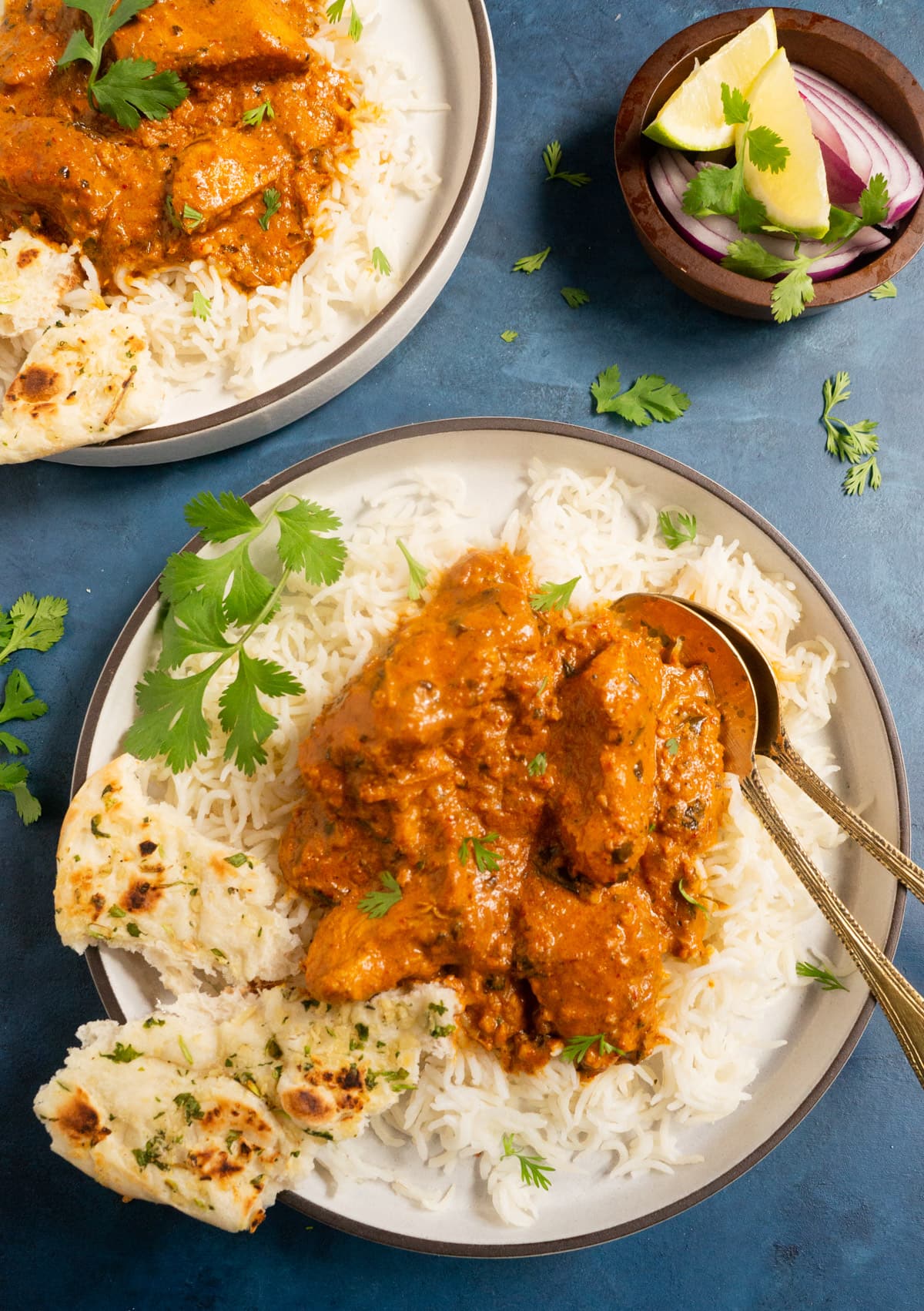
Table of Contents
What is Curry?
It’s nothing but a general term used for any highly seasoned saucy dish which may contain vegetables or meat.
Curry’s contrasting notes of spicy, heat, sour, and sweet have evolved over time in response to regional ingredients and cultural preferences.
This spicy, saucy meal, which comes from Indian culinary traditions, is interpreted differently in each country. Curry was transported over the oceans by British colonialism in India, where it was transformed using local ingredients.
So, what makes the Indian curry different from Thai curry or Carribean curry? You can read about the popular types of curries in our recent post here.
The essential premise of creating a curry remains the same, no matter what curry you are trying to make.
What Makes Curry Watery?
So, if you have guests arriving soon and your curry appears to be runny, here are some factors that can help you determine why the curry is watery.
If too much liquid or broth is added to a curry, it will become runny and thin. It may also be thin if the cooking temperature is too low for it to cook, or if the cooking time is too short, thereby preventing the sauce from being reduced.
For example, when sautéing onions and tomatoes for a curry, you want to make sure that there is not much liquid remaining and oil starts to ooze out before adding other ingredients.
Sometimes using frozen ingredients in a curry can make it watery. As the ingredients defrost, the curry can become watery.
What is the Perfect Consistency Of Curry Sauce?
If you have been enjoying your curry at your favorite restaurant or at home, you already know that a good curry sauce can be thick or thin depending on the type of curry.
The perfect consistency of a curry really depends on the type or origin of curry. Eg a bengali curry that is typically enjoyed with rice is usually on a thinner side. However chicken tikka masala, which is typically enjoyed with naan is quite thick.
A typical curry sauce should not spread all over your plate. It must be sufficiently thick to adhere to the bread.
It should, however, be liquid enough to dip your naan/ roti/ paratha in or can be poured and mixed with rice.
So, how can you tell if your curry gravy has the right consistency?
You can use what is called a “spoon test” to determine. When you drop the spoon into the sauce and lift it out, the back of the spoon should be nicely coated with sauce.
That said, many authentic Indian and thai curries might not pass this test, but they are just a delicious and good to enjoy!
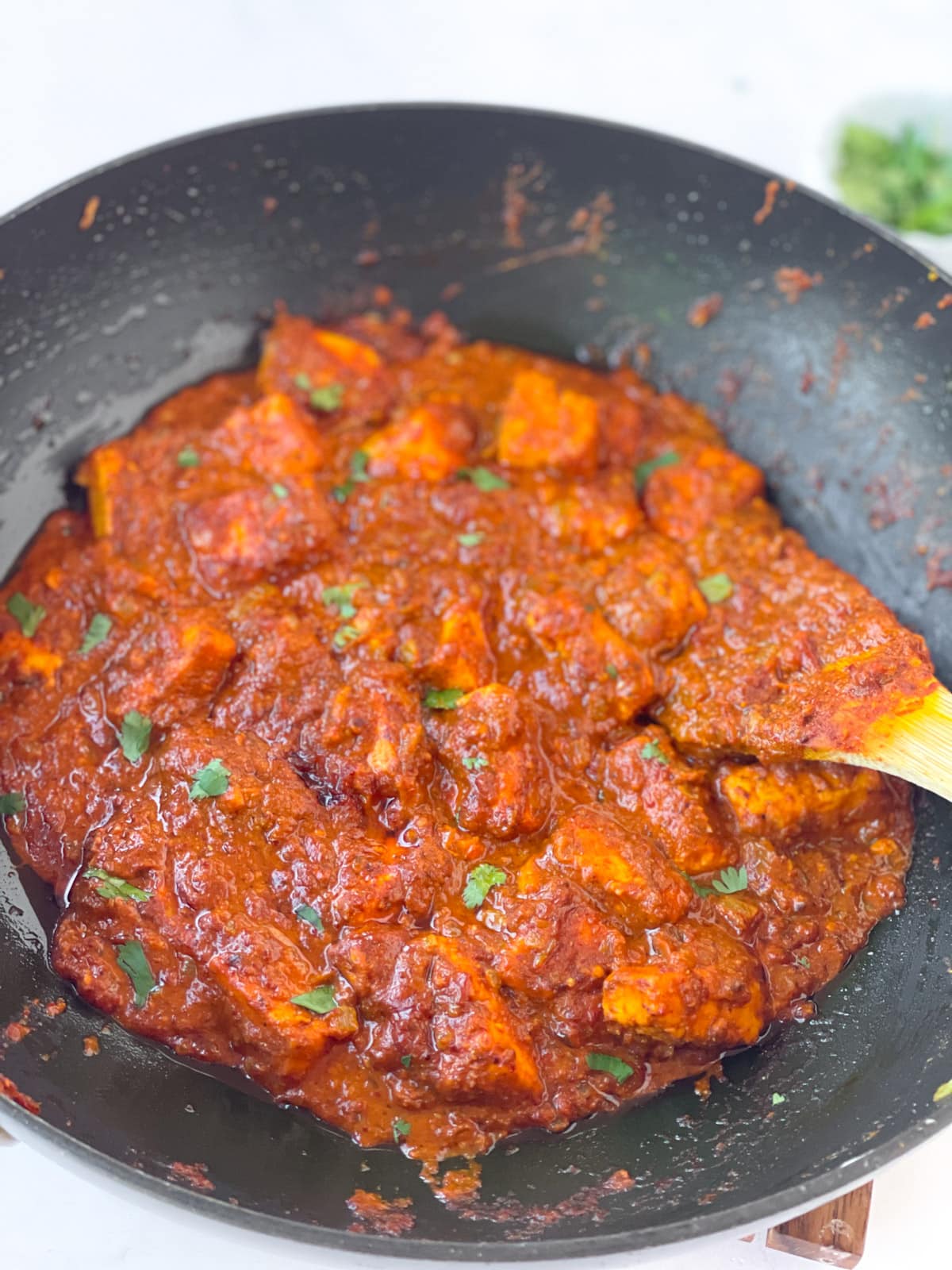
Ways to Thicken Curry While Cooking
Use these tips and tricks to quickly fix thin, runny gravies and sauces while you are still cooking.
If you are new to curry making, remember to use a good recipe. You might need to experiment and fine-tune some of the techniques listed below.
Cook the base ingredients i.e. onion, tomato, ginger and garlic well
It is critical in Indian cooking that the aromatics, such as ginger, garlic, onion, and tomato, are well cooked. This will influence the consistency of your curry.
When these aromatics lose moisture, they combine with spices to form a thick paste. When this paste is cooked for another 15-20 minutes, a layer of oil begins to appear on top.
This oil separation means that the aromatics and spices have released their flavors into the hot oil. It is the ”sign of doneness” and necessary to create the foundation for a delicious curry.
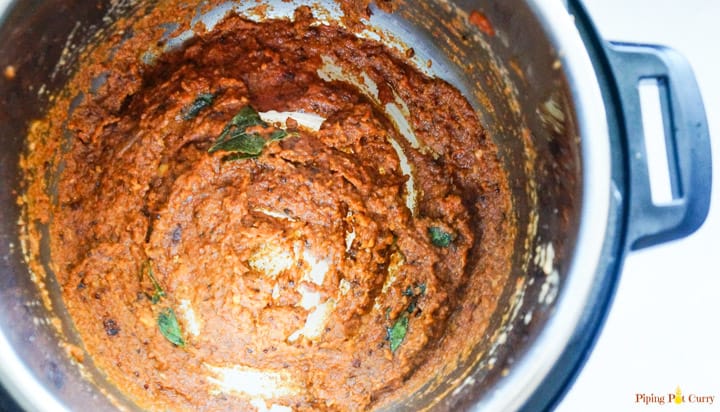
Add Tomato Paste/ Puree
This is actually a no-brainer for tomato-based curry sauces.
This is added at the beginning of the cooking process, which also cuts down the cooking time.
You may need to tweak the other seasonings or vegetables to compensate for the excess tomato.
Using Less Liquid
Vegetable curry dishes are typically thinner.
It’s because as the vegetables cook, they release moisture.
As a result, start with less liquid/water at first. You can add more if you need it but adding excess can result in a thin curry sauce.
How to Thicken Curry?
The method you use will depend on the type of curry sauce you’re making and where you’re at in the cooking process.
Other things to consider when selecting a method include personal tastes, time, and the availability of ingredients in your pantry.
Simmer / Reduce the curry sauce
Simmering the curry sauce is the simplest method for reducing the sauce. Set the curry to simmer at a lower temperature for a longer period of time, this thickens the sauce and as a bonus also intensifies the flavor.
The longer you leave your sauce to simmer, the thicker it will become.
You have to be very careful though and keep stirring at constant intervals to ensure that the curry doesn’t scorch/ burn.
This is a slow technique and my preferred one but if you are in a hurry, I suggest you try other methods for faster thickening.
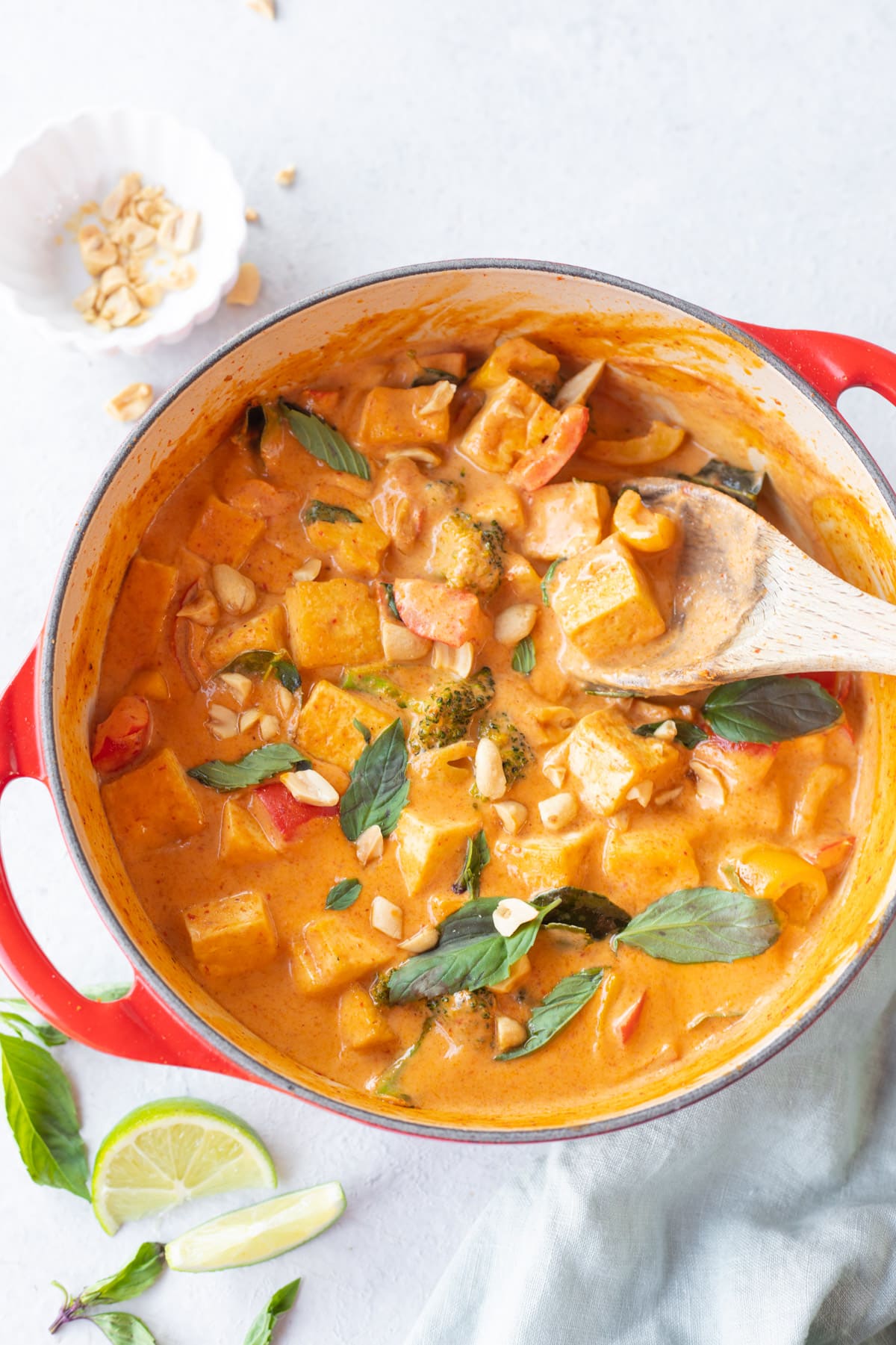
Cooking Without a Lid
It is important to leave the cooking pot uncovered when simmering. This allows the steam to escape easily which helps to reduce the sauce quickly.
Also, if you use a wider/ larger pot/ pan, the reduction will be faster as the larger surface area of the pan will result in quicker evaporation.
Make a Roux
A roux, which is made with equal parts flour and butter, is an effective thickener.
In a saucepan over medium heat, melt a tablespoon of butter. Then, add a tablespoon of all-purpose flour to the butter (usually equal parts are recommended).
Cook on low heat until this mixture forms a paste, then continue to cook until it has a nutty aroma.
Now thoroughly incorporate this paste into your curry with constant stirring. As the sauce continues to simmer, It’ll thicken instantly.
The roux improves the texture by thickening the curry, and adds a distinct flavor to the sauce.
Cornstarch or Arrowroot
Curries can be thickened quickly using starch. You can use cornstarch or Arrowroot starch. These are easily available at home.
When using this procedure, you need to prepare a slurry. If you add the starch directly to your curry, it can clump and not make a smooth curry.
To form a smooth slurry, combine starch with cold water. You can also use a cup of the thin sauce from the curry and add the starch to it.
Add this slurry, at the very end of the cooking process. Once the slurry is added and the sauce comes to a boil, it will thicken.
Yogurt or Cream
The addition of creamy dairy ingredients to sauces improves their flavor and consistency.
Full-fat or greek yogurts are ideal as they have a thick consistency. Cream and yogurt also balance out the heat if the curry is spicy.
One thing to ensure is that you add it in small amounts while stirring constantly at a low temperature, so that they do not curdle. Do not add yogurt while the curry is still hot, it will split.
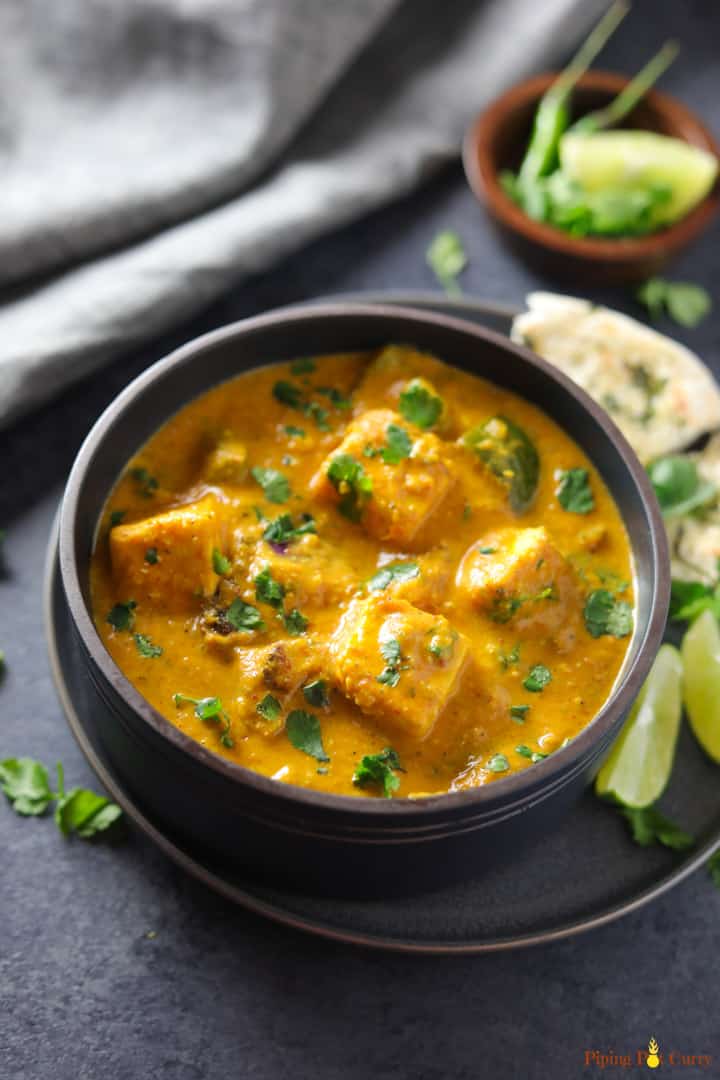
Coconut Milk/ Cream
Coconut is a great ingredient used for thickening curries. It can be used in any form – milk, cream or grated.
This method is most suited for Thai, South Indian and other Asian curries. It not only makes your curry flavorful, but also makes the curry creamier.
Typically in a can, the thick cream coagulates on the top of the can. You can also refrigerate the can, which helps to separate the cream to the top.
Don’t shake the can before opening. This way you can scoop out and use the cream. Now add the liquid from the can to thin the sauce as needed.
Lentils or Legume Puree
Adding around two tablespoons of cooked red lentils to curries can help in thickening it.
In curries, lentils swell and absorb the excess moisture in the sauce, thereby thickening it.
Lentils can somewhat alter the flavor of your curry, but it will also boost the nutritional content of the sauce.
Nuts
Adding nuts is an easy way to thicken the curry sauce. This also makes the curry creamy, and boost its nutritional value.
Depending on the curry sauce you’re making and your personal preferences, you can use unsalted raw cashews, almonds, or peanuts.
If there are any people who are allergic to nuts, this method should be avoided. Some people also use poppy seeds or melon seeds to thicken the sauce.
You can also use 1-2 spoons of smooth cashew butter or other nut butters. Make sure to add this when the curry is done cooking. Otherwise the sauce might thicken too much.
Pureed Vegetables
Boiled vegetables can be made into a thick paste/ puree and then added to the sauce.
Potatoes, squash, carrots, and other root vegetables can be used.
The addition of vegetables thickens the curry sauce while reducing the also balancing out the heat of the curry.
Puree Some of the Ingredients
The vegetables from the curry can be removed and processed separately in a food processor (about a quarter of it, depending on the quantity of the curry) and then reintroduced into the sauce. This will increase the solids in the curry and thicken it.
What if the Curry Sauce is too Thick?
If your curry sauce is too thick, it is easy to fix it! All you need to do is dilute it. Add more liquid – such as water, broth etc.
Adjust the quantity of the liquid till you are happy with the consistency. I also suggest to give the curry a quick boil after adding additional liquid to it.
And now that you are equipped with the knowledge of how to properly thicken your curry sauce, you can achieve the perfect thickness every single time!
Did we get you craving for a bowl of some warm spicy curry and rice?
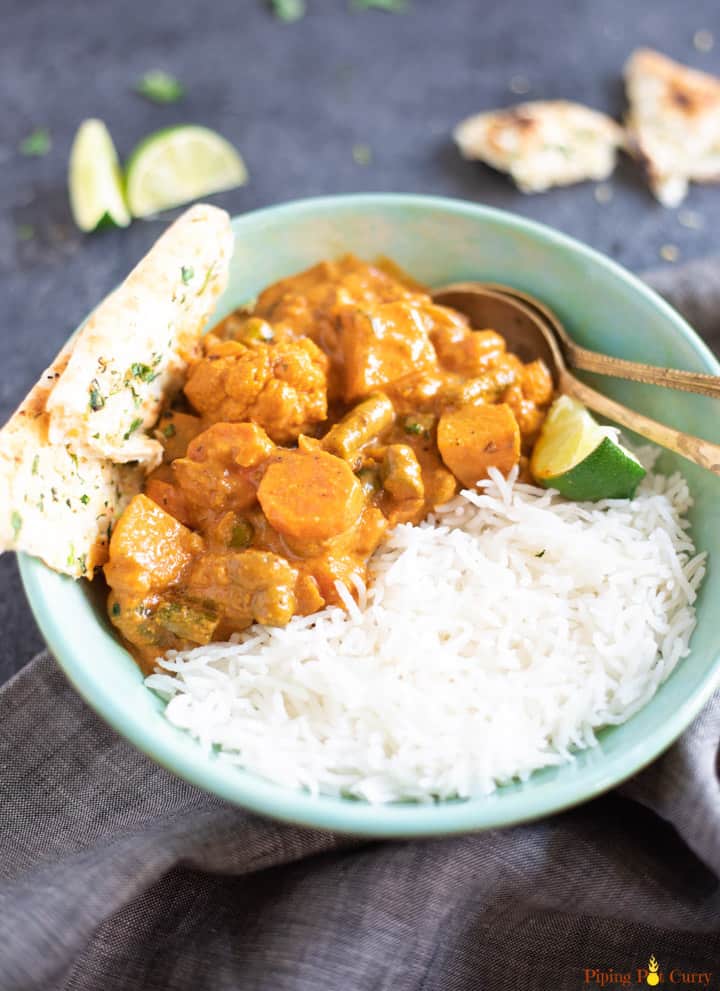
Try Our Popular Curry Recipes:
- Chicken Tikka Masala
- Butter Chicken
- Palak Paneer
- Chana Masala
- Vegan Panang Curry
- Thai Green Curry with Tofu
- Dal Makhani
- Vegetable Korma
- Chicken Karahi
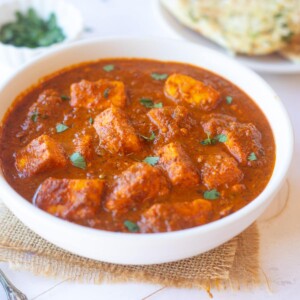
How To Thicken Curry?
Ingredients
- Curry
- Thickening agent
Instructions
- Take your favorite curry that is thin and runny, that requires thickening. Use any of the below methods to thicken your curry depending on the time, ingredients available and your personal preferences
Simmering/ Reducing
- Let the sauce simmer/ reduce at a lower temperature for a longer period of time. Stir the curry at constant intervals to ensure that it doesn't scorch/ burn. Stop reducing when you are happy with the consistency.
Cooking Without The Lid
- Let the pot sit uncovered while simmering slowly. This allows the steam to escape easily thereby speeding up the reduction process.
- Tip: Use a wider/ larger pot/ pan. The reduction will be faster as the larger surface area of the pan will result in quicker evaporation.
Make a Roux
- Make a roux with equal parts flour and butter. In a saucepan over medium heat, melt a tablespoon of butter. Then, add a spoonful of all-purpose flour to the butter. Cook on low heat until this mixture forms a paste, then continue to cook until it has a nutty aroma.
- Next, thoroughly incorporate this paste into your curry sauce with constant stirring. As the sauce continues to simmer, It'll thicken instantly.
Cornstarch or Arrowroot
- Use cornstarch or arrowroot starch to thicken your curry. Prepare a slurry with starch and cold water/ curry. If you add the starch directly to your curry, it can clump.
- Add this at the very end of the cooking process. Once the slurry is added and the sauce comes to a boil, it will thicken.
Yogurt or Cream
- Add a dairy ingredient like Full-fat Greek yogurt or cream. They also balance out the heat if the curry is on the spicier side.
- Add it in small amounts while stirring constantly at a low temperature. It is important to be mindful here that if you add yogurt while the curry is still hot, it will split.
Coconut Milk/ Cream
- This method is most suited for Thai, South Indian and other Asian curries. Don't shake or mix before opening the can because the thick cream will float to the top. First, scoop out and use the cream, then add the remaining liquid and thin as needed.
Lentils or Legumes Puree
- Add around two tablespoons of cooked red lentils to curries to help thicken it. Lentils swell and absorb the excess moisture in the sauce, thereby thickening it.
Nuts
- Add nuts to the curry sauce to thicken it. This gives you a thicker texture and boosts the nutritional value.Depending on the curry sauce you're making and your personal preferences, puree a handful of unsalted raw cashews, almonds, or peanuts.
- You can also use 1 to 2 tablespoons of smooth cashew butter. If using cashew or other nut butter, add it near the end, just before serving.
Pureed Vegetables or some of the ingredients
- Boiled vegetables or vegetables from the curry (about a quarter, depending on the quantity of the curry) can be made into a thick paste/ puree and then added to the sauce. Potatoes, squash, carrots, and other root vegetables can be used.
- Quickly combine the puree with the rest of the sauce over low heat. The addition of vegetables thickens the curry sauce while reducing the also balancing out the heat of the curry.
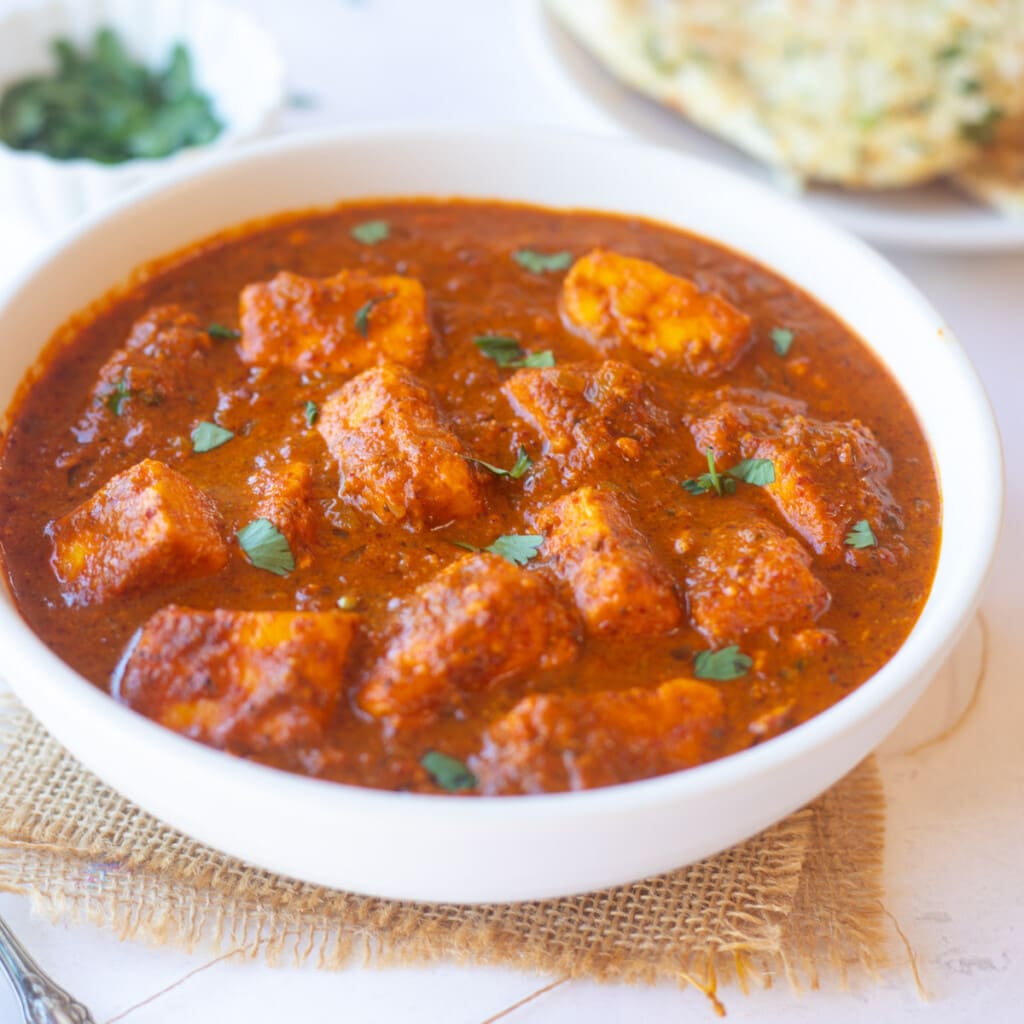
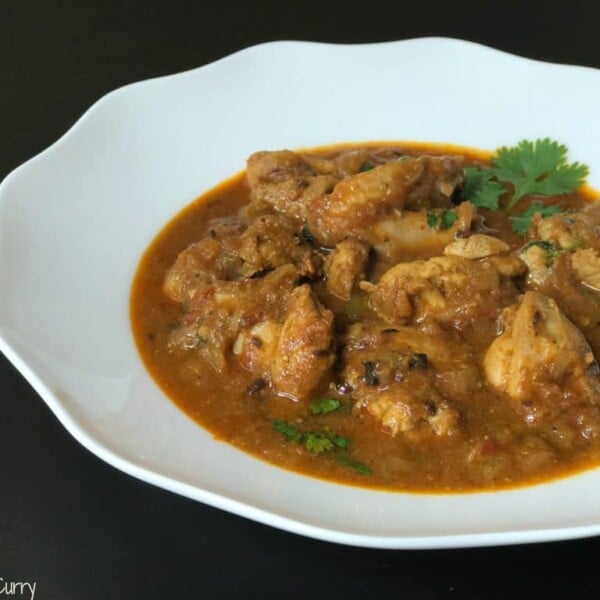
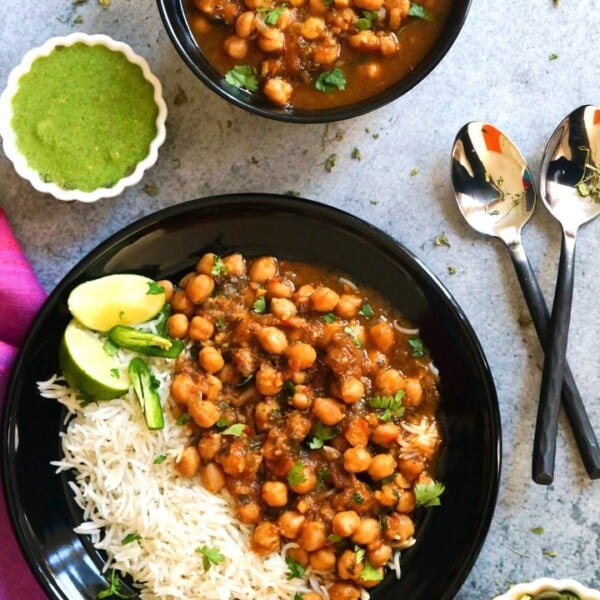
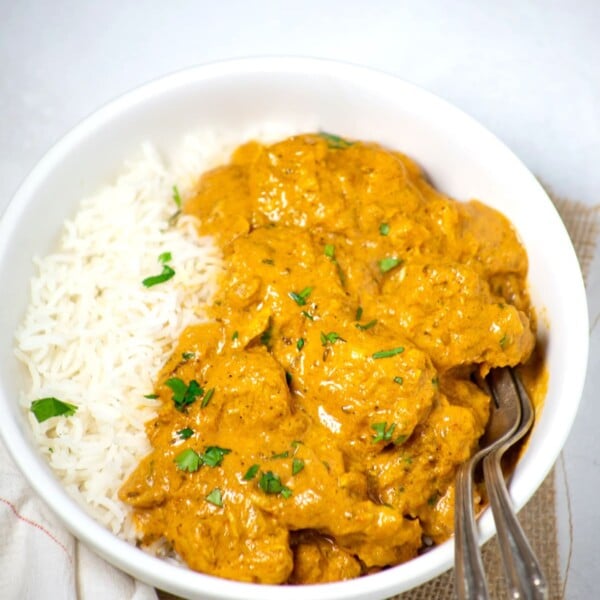
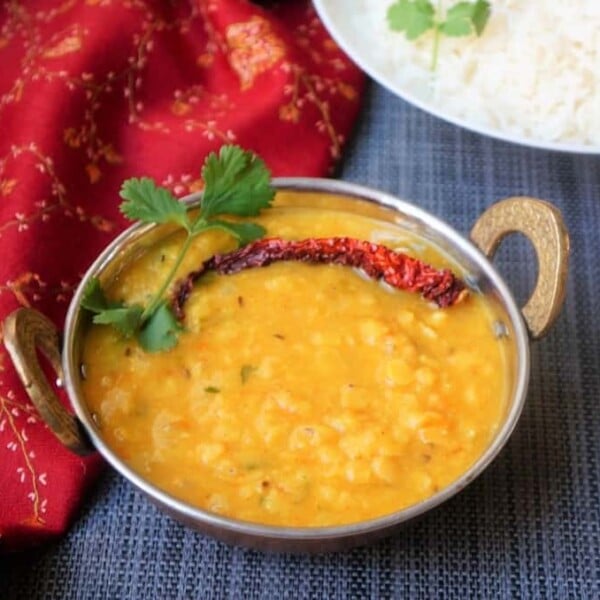








Thanks for the tips!
wow super helpful, Meeta! Thank you!
Hi Maneesha – So happy to hear that 🙂